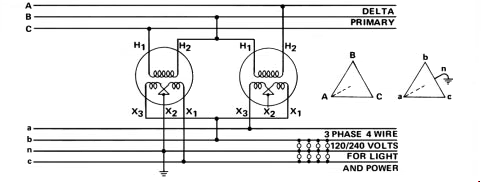LarryFine
Master Electrician Electric Contractor Richmond VA
- Location
- Henrico County, VA
- Occupation
- Electrical Contractor
Me again. I think I know how to do this, but I'd appreciate confirmation. Let's say I have a 240/120v service with a high-leg, and the loads are 100a single-phase on A and C, and 25a three-phase all the way around.
Would I subtract the 25 from the 100a, and calculate the 3-ph VA at 25a (25 * 240 * 1.73), and the remaining 75a 1-ph (75 * 240), and then add the two VA's together? This seems logical, but I'd like to be sure.
Thanx as always.
Would I subtract the 25 from the 100a, and calculate the 3-ph VA at 25a (25 * 240 * 1.73), and the remaining 75a 1-ph (75 * 240), and then add the two VA's together? This seems logical, but I'd like to be sure.
Thanx as always.

